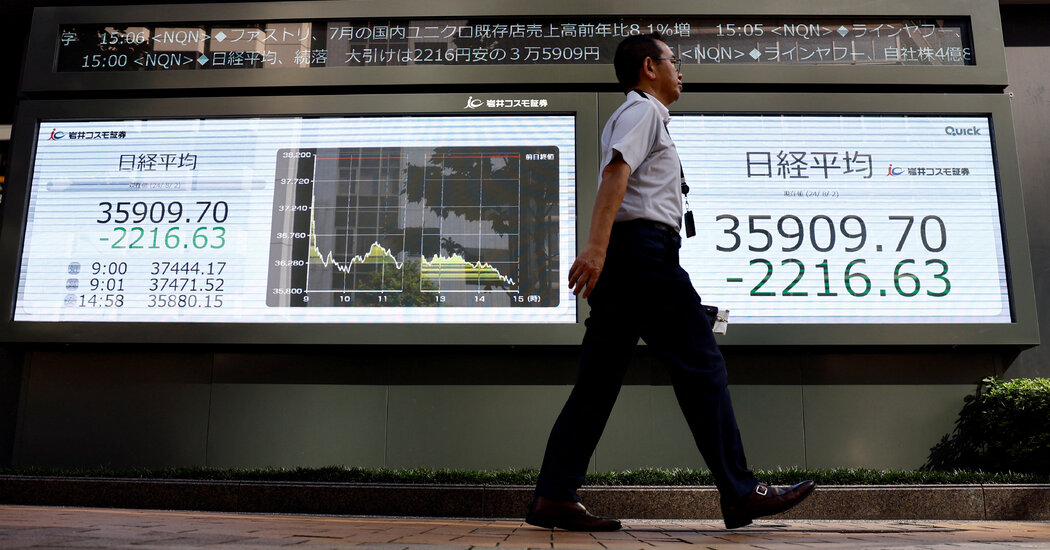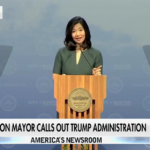Markets were left nonplussed by increasingly erratic U.S. tariff announcements over the weekend, although nerves have been soothed slightly by the reduction of tensions at the long-end of several major government bond markets.
I’ll get into all of this below and then explore why the U.S. government, issuing ever more debt, should be wary about becoming overly reliant on the kindness of private investors.
* U.S. President Donald Trump said Vladimir Putin had “gone absolutely CRAZY” by unleashing a massive aerial attack on Ukraine and said he was weighing new sanctions on Moscow.
* The euro could become a viable alternative to the dollar, earning the 20-nation bloc immense benefits, if governments could only strengthen the bloc’s financial and security architecture, ECB President Christine Lagarde said on Monday.
* Japan will consider trimming issuance of super-long bonds in the wake of recent sharp rises in yields for the notes, as policymakers seek to soothe market concerns about worsening government finances.
* Ukraine’s security is critical to Europe, but the continent can no longer rely on the United States to support the country’s war with Russia. The EU, the UK and other willing countries therefore need a way to support Ukraine that does not require Trump’s permission. The best option is to unlock Russia’s $300 billion of frozen central bank assets. Read the latest essay from Breakingviews columnist Hugo Dixon.
* U.S. President Donald Trump’s budget bill is likely to bake in outsized deficits for years to come. Listen to the latest episode of Reuters Econ World podcast, where I speak with host Carmel Crimmins about what that means for U.S. debt levels and the wider economy.
Trade confusion and long yield relief
After a torrid week for long-dated sovereign debt, some calm was restored on Tuesday by indications Japan would consider trimming sales of super-long bonds. Policymakers in Tokyo are seeking to reduce market concerns about the country’s worsening government finances.
Yields on 30-year Japanese government bonds fell by up to 20 basis points to 2.83% after the report, the lowest since May 8. The benchmark 10-year yield dropped 5 points to 1.455%. The dollar rose 0.5% against the yen to 143.9.
Also helping ease pressure on the long end of bond markets was a Financial Times interview with Britain’s debt management chief Jessica Pulay, who emphasized that the UK had shifted to shorter-term borrowing this year. Pulay noted that demand for long bonds from pension funds has waned due to demographics and pension scheme changes.
UK 30-year gilt yields fell back almost 20 bps from last week’s peaks.
U.S. 30-year yields declined in sympathy, retreating below 5% for the first time since last Tuesday.
As traders returned following the long Memorial Day weekend, U.S. stock futures were up smartly, largely because Trump has backed off from Friday’s threat to impose 50% tariffs on EU imports next month. He instead restored a July 9 deadline to allow for talks between Washington and the 27-nation bloc to produce a deal.
European stocks (.STOXXE), opens new tab were higher too on Tuesday, with the euro slipping back after two days of gains on the confusing policy twists.
The back and forth on tariffs will likely keep trading on edge, but markets will likely have to get used to this policy volatility in the weeks and months ahead.
Federal Reserve Bank of Minneapolis President Neel Kashkari on Tuesday called for keeping U.S. interest rates steady until there is more clarity on how higher tariffs are affecting inflation. He warned against simply looking through the impact of a potential supply side shock.
“It may take months or years for negotiations to fully conclude, and there could be tit-for-tat tariff increases as trading partners respond to one other,” he said.
This week’s release of the April personal consumption expenditures update – the Fed’s favored inflation gauge – will be monitored closely.
U.S. markets return amid a sweep of economic updates, including durable goods orders for April and consumer confidence readings for May.
Meanwhile, tech investors are turning to the big earnings event of the week. Shares of semiconductor industry bellwether Nvidia (NVDA.O), opens new tab gained 2.8% as the company is slated to report quarterly earnings after markets close on Wednesday.
Elsewhere, Trump Media & Technology Group (DJT.O), opens new tab advanced 10% after a media report said Trump’s social media firm planned to raise about $3 billion to spend on cryptocurrencies such as bitcoin.
Now to today’s deep dive, where I explore how declining investor appetite for long-duration debt could stress government funding markets.
Long bond blues stress the ‘bedrock’
Bonds had a bruising week recently and investor aversion to long-dated government debt appears to be rising.
Anxiety over U.S. debts and deficits took center stage as Trump’s fiscal bill passed the House of Representatives – potentially adding another $3.8 trillion to the $36 trillion debt pile over the coming decade.
But mountainous government debts across major economies and unpredictable inflation, amplified by unfolding trade wars, fuel uncertainty over the central bank interest rate horizon.
At the same time, central banks continue to reduce the huge holdings of government debt accumulated over the past 15 years, particularly during the pandemic.
These developments require private investors to take up the growing slack at a nervy time, even as many of these investors are increasingly price-sensitive and wary of long-duration bonds.
Many non-bank private investors embrace long-duration debt. This includes pension and insurance funds that crave steady long-term income streams from relatively safe government credits in order to match their long-term liabilities.
Others, such as mutual funds or hedge funds, may be less willing to absorb outsized price risks.
And as exchange-traded funds that track long-term Treasuries show, it’s been a dire few years.
The iShares ETF of U.S. Treasuries with remaining maturities of 20 years or more is down 3.5% for the year so far, almost as much as the loss in Wall Street’s tech-heavy Nasdaq equity index (.IXIC), opens new tab.
It has now halved in price since it peaked during the pandemic and is down 30% from the eve of the COVID outbreak.
While “terming out” government debt to longer maturities has long been seen as a prudent practice to reduce roll-over risks with too much short-dated borrowing, this strategy may now contain frailties of its own due to shifts in the investor base.
With economic and policy uncertainties rife, attention is shifting toward private investor commitment and market stability.










